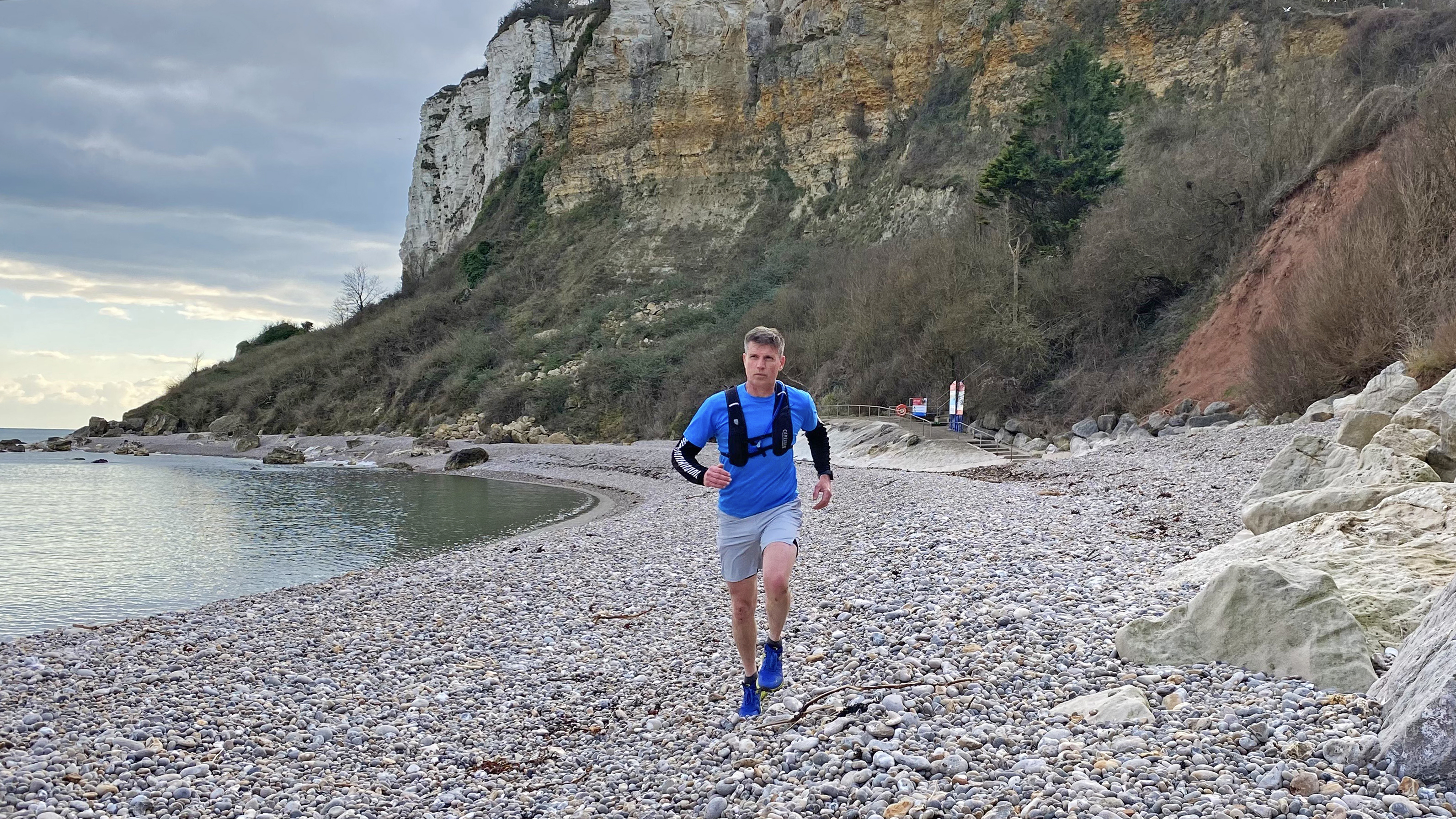Advnture Verdict
The Dart is a well-designed hydration vest for training runs and races of around 10 to 25 miles, providing two options for carrying liquids (a back-mounted reservoir and a single soft flask at the front), which allow you to manage your hydration needs without stopping. Dry storage space is at a premium, however. There’s room for a phone and several bars and gels in the front ‘Control Panel’, but unless you dispense with the reservoir (which is one of the best things about this pack) or run with it half empty, you can’t fit much in the main compartments.
Pros
- +
Top-quality 1.5L Crux reservoir included
- +
3 zipped compartments (including a front pocket)
- +
2 easily adjustable sternum straps
- +
Excellent breathable harness
- +
Body hugging without being restrictive
- +
Trekking pole holders
Cons
- -
Very limited dry carry capacity
- -
No high-vis reflective elements on rear
- -
Soft flask not included
- -
No whistle
You can trust Advnture
List price: $75 (US) / £75 (UK)
Weight without bladder: 210g / 7.4oz
Weight with bladder (empty): 393g / 13.8oz
Colors: Black / Peach / Fiery red / Royal blue
Liquid capacity: 1.5L bladder plus 1 x 500ml (20oz) soft flask
Dry storage capacity: 0.5L / 210 cu in
Fit: Unisex
Sizes: One size (fits chest range 82–116cm / 32–46in)
Compatibility: Hiking and trail running
CamelBak founder Michael Eidson invented the concept of rear-mounted hydration packs (small backpacks containing a water reservoir or bladder, with an over-the-shoulder drinking hose, which prioritize hydration over everything else), and the US brand remains synonymous with these now popular products, to the extent that many people use CamelBak to generically refer to all such items. But since the concept was launched in the late 1980s, multiple brands have picked up the idea and run with it, and CamelBak face fierce competition from other players, including premier backpack brands like Osprey, who are hot on their heels.
Eidson’s original design was intended for mountain bikers, but CamelBak (and everyone else) now produce hydration packs for trail runners, hikers, fastpackers and paddlers as well as pedalers. The Dart is styled as a running vest, and I was looking forward to testing it on the trails to see whether CamelBak are still leading the field with innovative and intelligent solutions to the ever-pressing problem of how to haul heavy H2O while trying to stay fast and nimble.
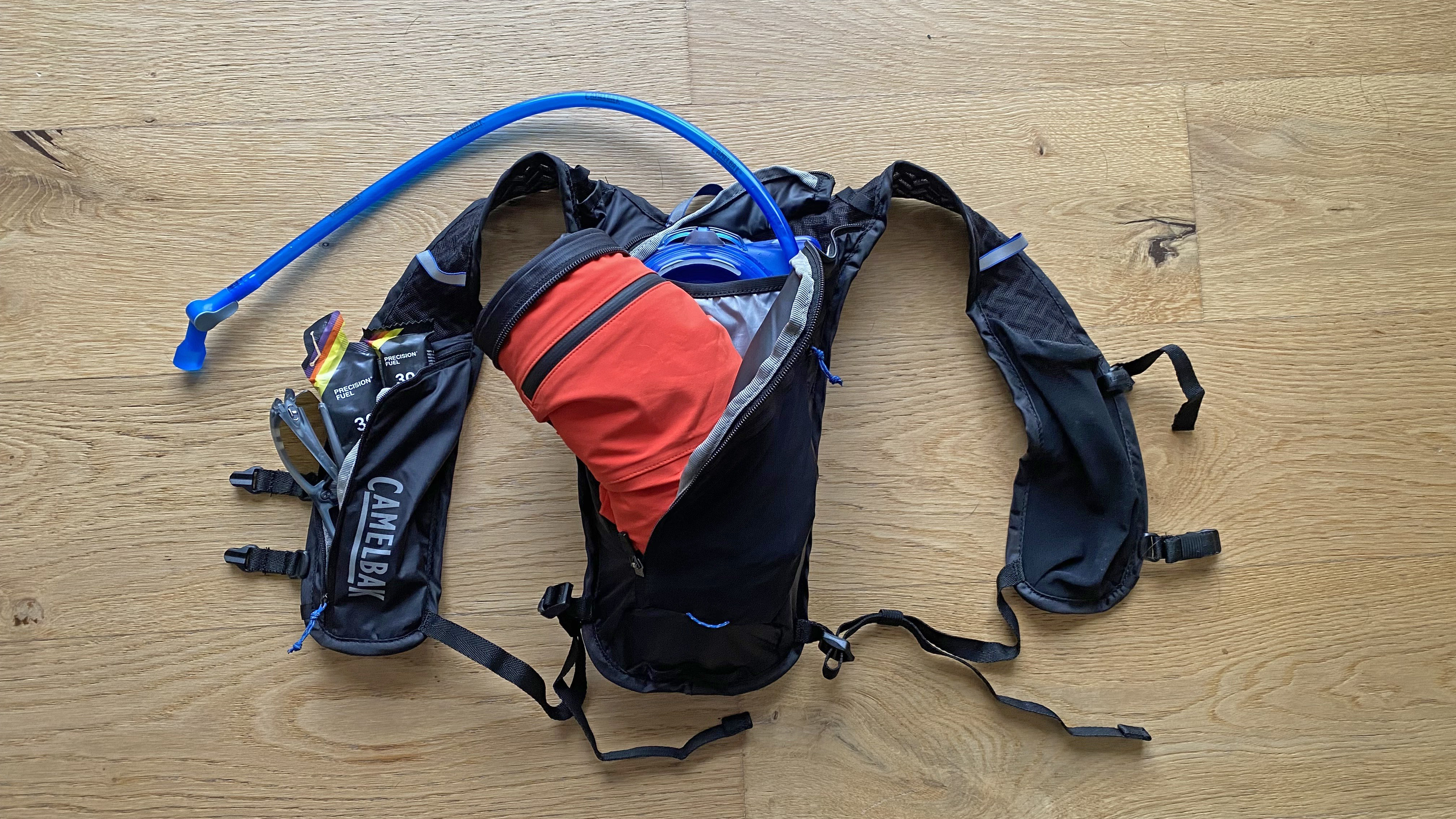
Compatibility
With dry carry capacity of just 0.5L (when used with the reservoir, as intended), the Dart is most definitely designed as a running vest rather than a pack with hydration capacity, so you need to bear this firmly in mind when assessing whether it’s the right product for you.
If you’re weighing up whether to go for a hydration pack or a running vest, then you need to consider how much other kit you will want or need to carry with you while running. If all you really require is water, plus a few running gels and energy bars, your phone (or a satellite communication device) a small running headlamp, a compass and perhaps a very lightweight running jacket, thin gloves, and/or a hat, cap or sun visor or running sunglasses, then you can probably get away with a vest (the design of which will always be more minimalist). If you think you will need bulkier items – such as extra base layers, a waterproof shell jacket and lightweight rain pants, and a first-aid kit, as specified by many ultra-running races and adventure events – then you will need a more capacious running pack.
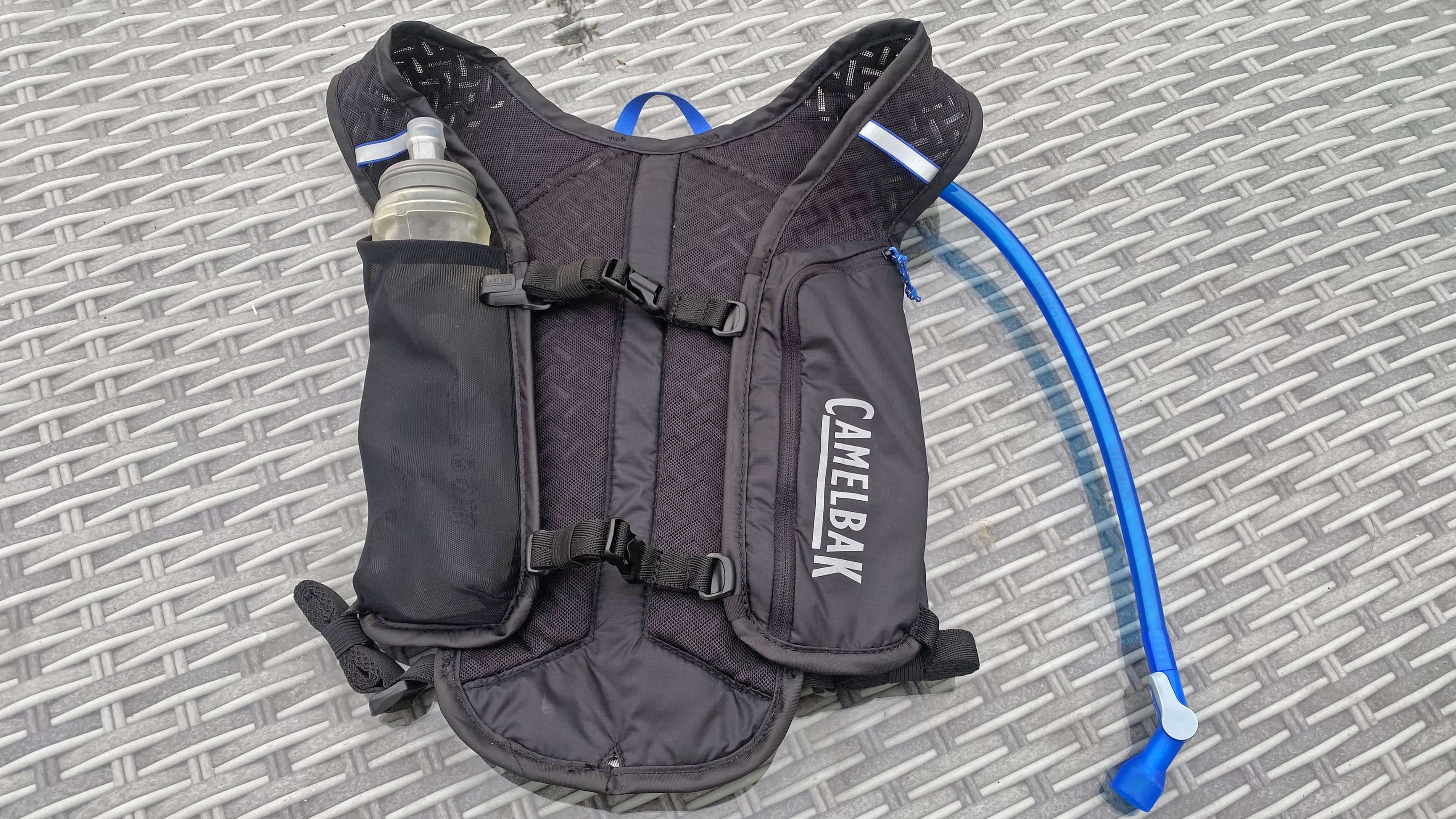
Design and materials
There are, apparently, some recycled materials used in the construction of the Dart, but CamelBak doesn’t specify where or how much. One of the things I love about CamelBak, however, is that its products, being lazer-focused on hydration, always have a premium-quality bladder included (with many other brands you have to buy these as an extra, which is annoying). The Dart comes with an excellent 1.5L BPA/BPS/BPF-free polyurethane CamelBak Crux reservoir (which has a stand-alone price of $35/£35 if you were to buy it separately). The Crux boasts a self-sealing ‘Big Bite’ valve, so you don’t need to flip a lever to allow the water to flow (although it does also have a leak-proof on-off valve for extra insurance). It also features a double-sided hang hook, wide-mouth easy fill opening with a leak-proof cap and a fill handle, plus measurements on the side (in imperial and metric). Unlike most Crux Reservoirs, this one (my version at least) doesn’t seem to have a Quick Link easy release system for removing the hose from the bladder (useful for cleaning purposes), even though the attached label claims it does.
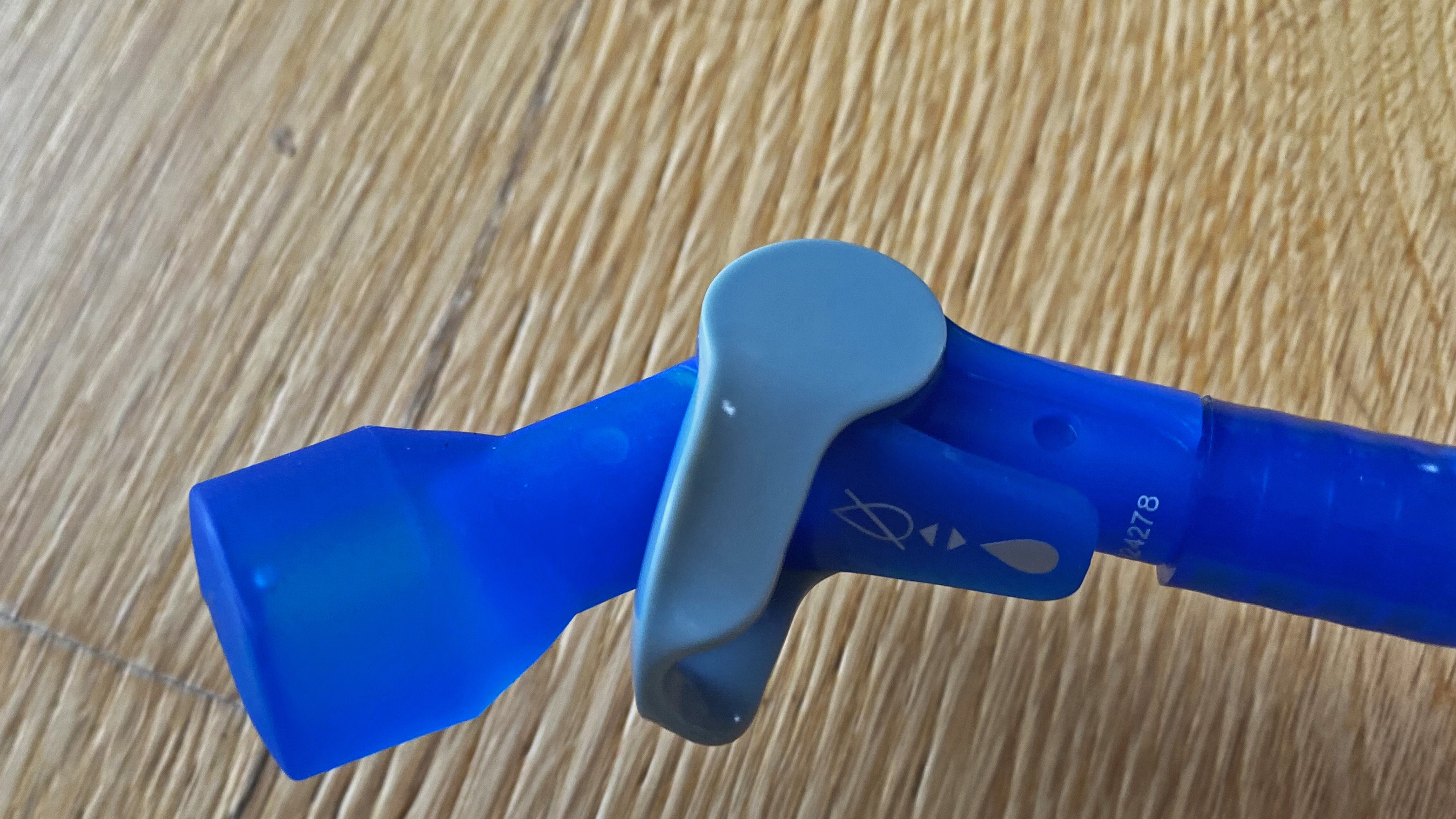
The reservoir slides into a dedicated pouch within the main compartment of the pack (which zips shut), and is designed to be hung from a hoop to keep it in position. The hose can be fed through portals on either shoulder, and it then passes through reflective loops on the harness, to keep it roughly in place, and there’s also a plastic clip (but only on the left side). The main compartment has a second section, but storage space is very limited when the bladder is full. On the outside there’s a small zipped pocket, which can be used to store energy bars and gels.
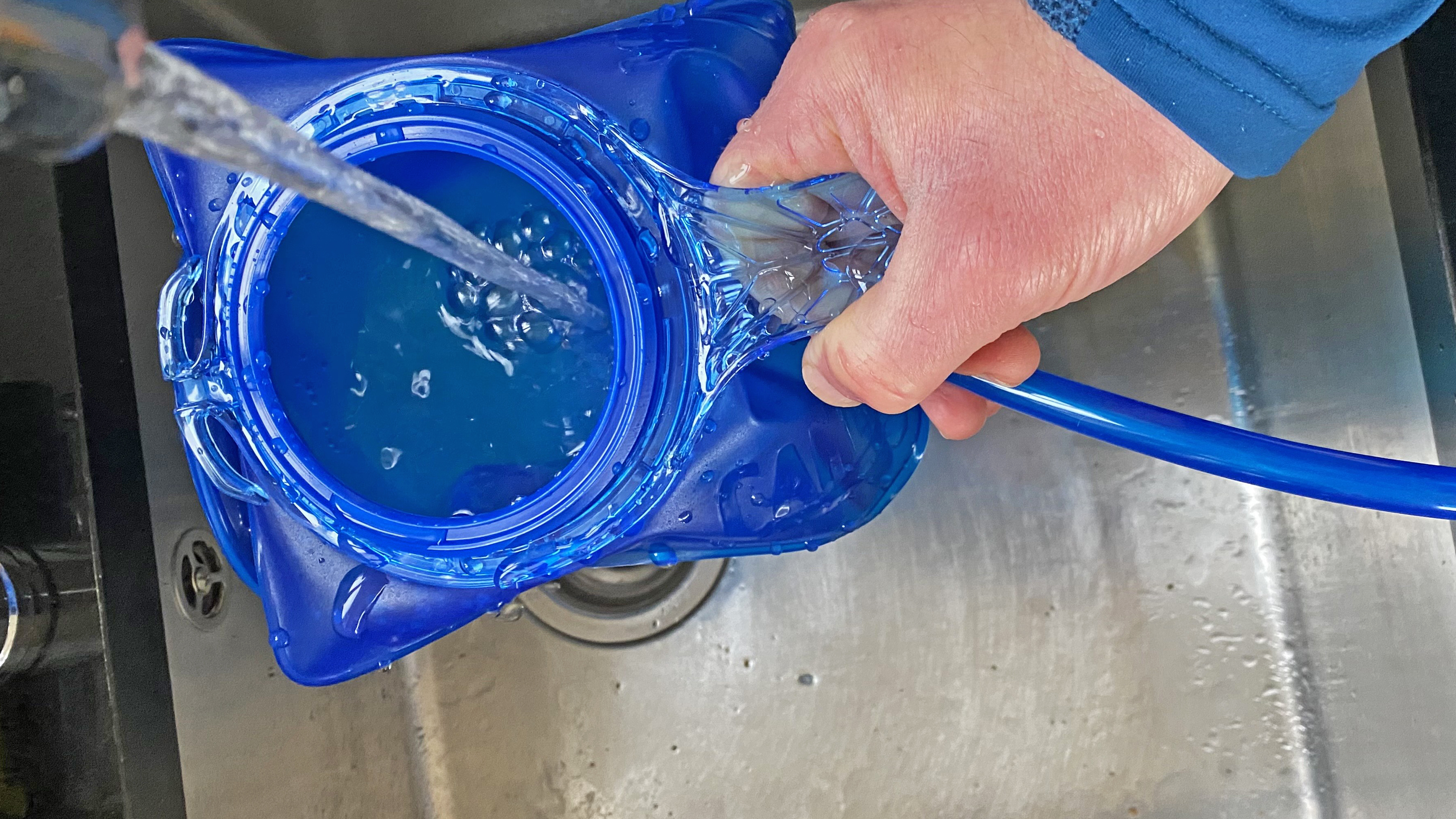
The back panel on the Dart is constructed from mesh, backed by honeycomb-shaped foam, to allow air to flow between the pack and your back. The use of this mesh continues across the harness to make it all as breathable as possible. The ‘Command Centre’, as CamelBak calls the front section of the Dart, features a pouch that can accommodate a 500ml (20oz) soft flask-style running water bottle (not supplied) on one side, and a large pocket with a zip, which can take most phones, and/or several energy bars and gels (there’s a small sub-pouch within it, for keys or money/credit card).
The harness can be adjusted and tightened via the side straps, and there are two sternum straps that can be easily moved up and down on sliders to achieve the optimum fit, something that is especially important on a unisex hydration pack. If you have lightweight running poles or trekking poles, these can be attached to the rear of the vest.
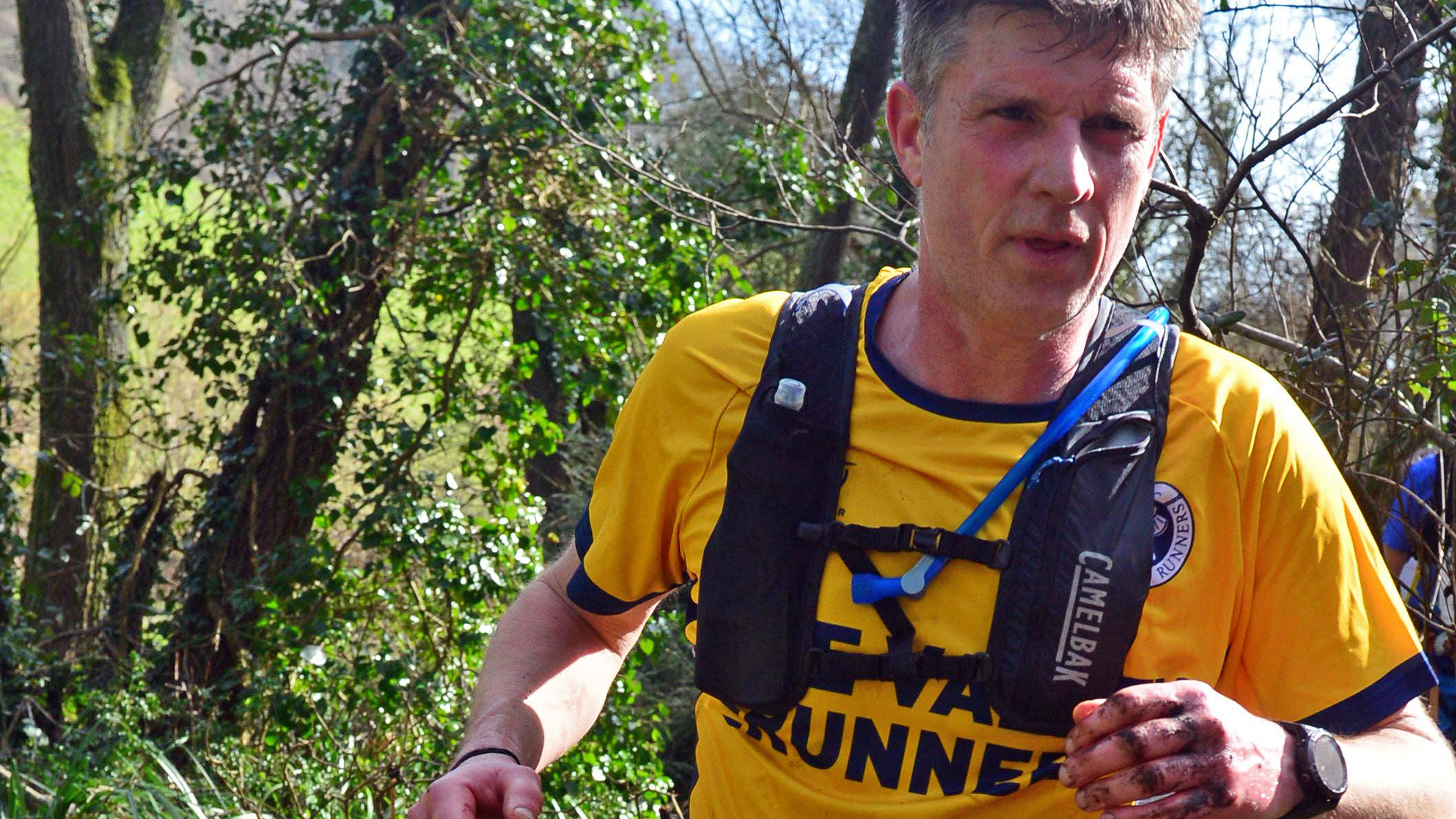
On the trails
I have been testing the CamelBak Dart hydration vest while training for and competing in my local event, The Grizzly, a 20-mile mixed terrain race across beaches, hilltops, fields, woodlands and bogs. In my opinion, the Dart has been designed exactly for training runs of around 10 to 20 miles, and events of about this length, when you don’t need to carry too much kit, just some energy bars, gels and a thin extra layer (running jacket) in case something goes wrong.
The Grizzly is a cup-free race, so while there are a few water stations you need to either carry your own liquids or a least a container to drink from. Having just discovered I’m a very salty sweater, I did a bit of both, with the reservoir loaded with an electrolyte mix and a soft flask in the front of the harness that I could easily access and refill at checkpoints. This system worked perfectly for the race, but had I needed to refill the main bladder in a rush, it would have been very easy, thanks to the reservoir’s wide mouth, the ergonomic handle and quick-twist closure system.
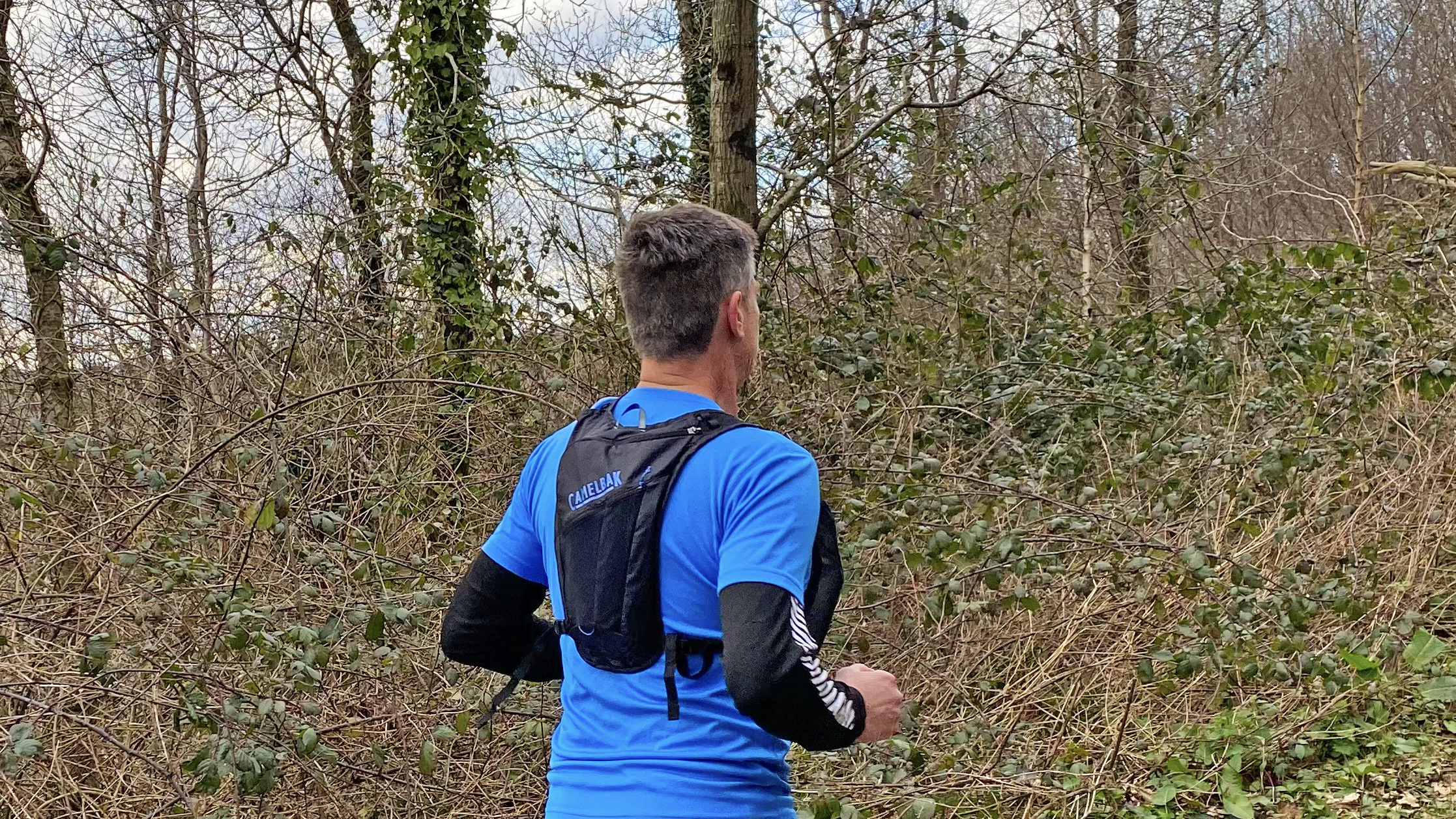
Conditions were chilly during training, but the Dart is easy to adjust so I could layer up when necessary and still achieve the tight fit you expect from a running vest. On race day it was really quite hot (for spring), but I found the mesh back panel and harness allowed a good amount of airflow, and I didn’t feel uncomfortable or suffer from an overly sweaty back. The sternum straps do their job nicely and they kept the vest tight to my body during an event that involved running at pace down lumpy and bumpy trails, and negotiating everything from thigh-deep swamps to pebble beaches and cliff climbs. In fact, the overall comfort levels of the Dart have been excellent, during training and racing.
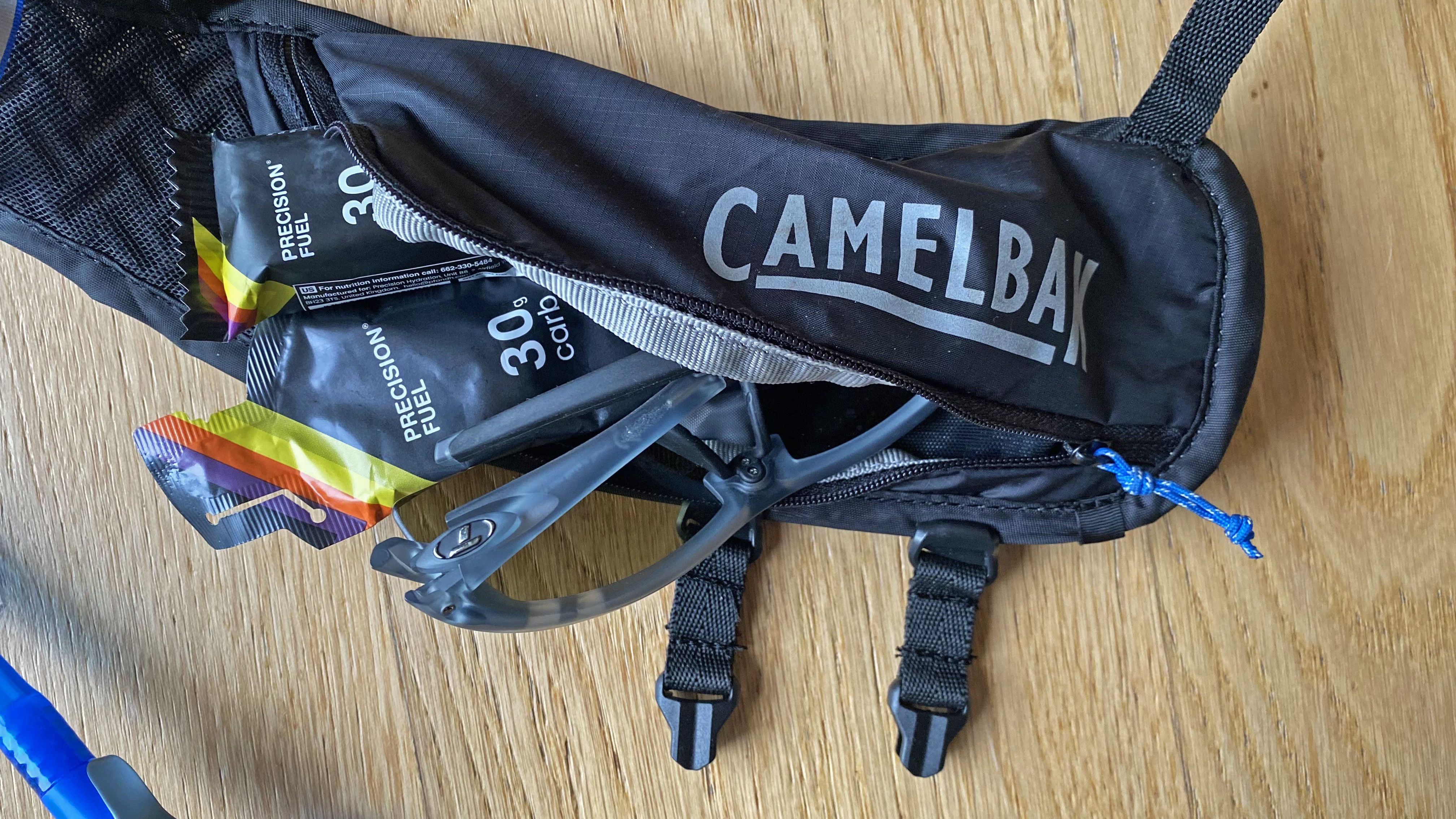
My main criticism of the Dart is with its miserly dry carry capacity. The front pockets on the Command Center are nice and accommodating (I can get my phone and a couple of gels or small bars in the left pocket, and either a 500ml soft flask or a pair of running sunglasses and some more sustenance in the right breast pouch), but when running with the reservoir full (with 1.5L of liquid), it really is hard to fit anything else in the back compartments at all. Even a super svelte running jacket only just fits in, and it feels as though you’re putting the zip under stress to get it shut. A tiny bit more space, or the addition of some external bungees would make this a much more versatile vest – but then it is marketed as a minimalist piece of kit, so I guess that’s what you should expect.
It is possible to carry lightweight running or trekking poles on the CamelBak Dart, by using the bungee loops on the rear, but this is pretty cumbersome on such a small volume pack. Also, while there are a couple of reflective loops, they are all on the harness, so there is nothing on the back of the pack to alert vehicles to your presence when running on roads or lanes after dark. Lastly, unlike on some running vests, there is no whistle incorporated into the design of the Dart, which is perhaps not so surprising, since this vest isn’t really designed for ultra-length events (when whistles often form part of the mandatory kit list).
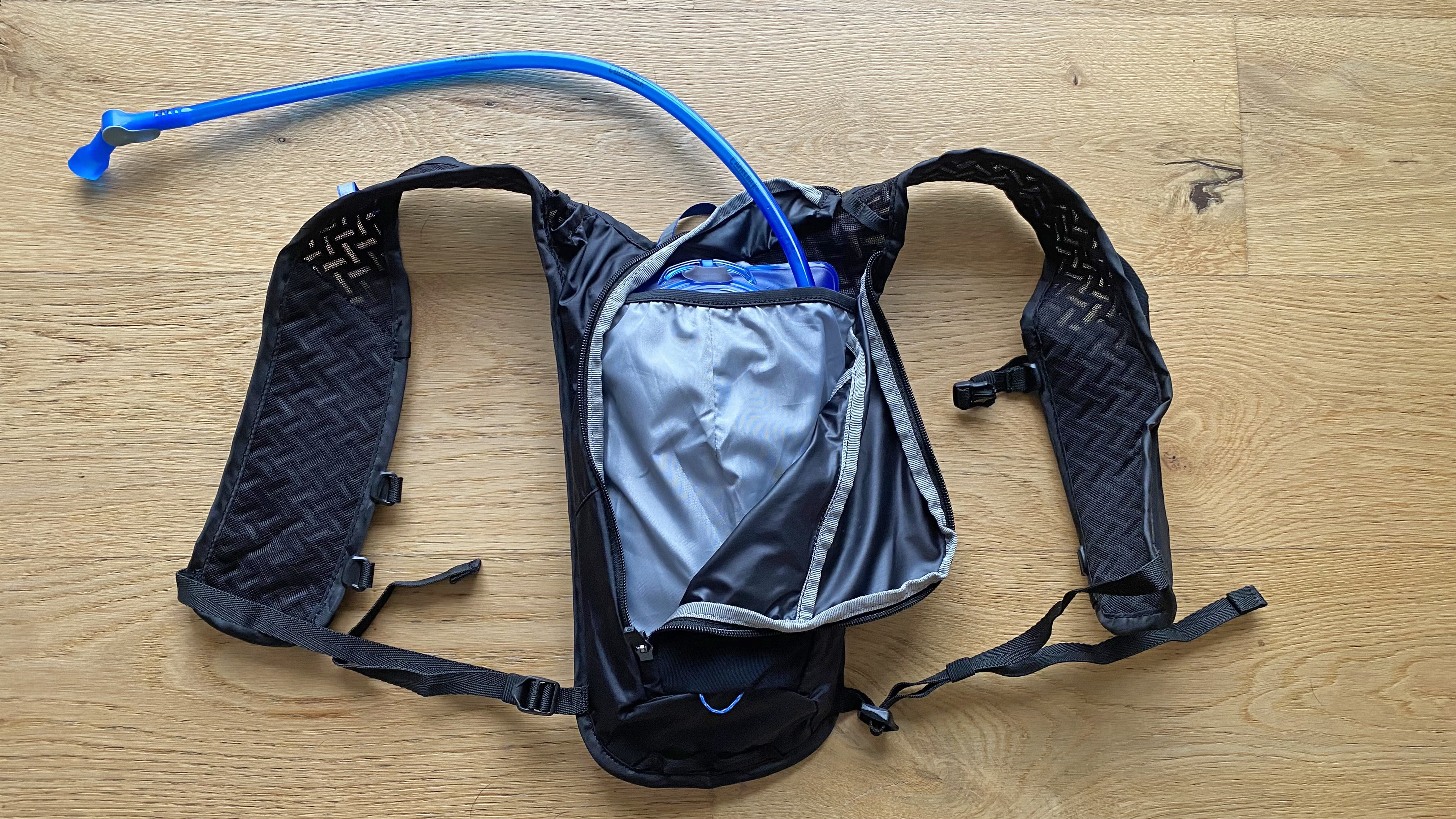
Also consider
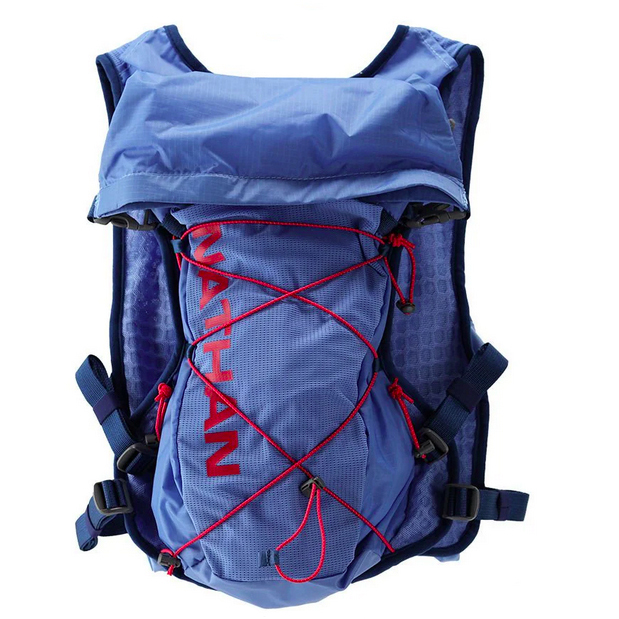
This hydration hauler from Nathan Sports perfectly straddles the gap between a space-limited running vest (like the Dart) and a more capacious running pack. It has considerably more dry storage than the Dart, but is a good bit larger, heavier and more expensive. It comes with a 1.5L reservoir and offers the capacity to carry two 500ml soft flasks (not included).
For
- 1.5L bladder included
- Zipped compartment
- Excellent carry capacity
- Easily accessible pockets
- Body hugging without being restrictive
- Very breathable harness
- Trekking pole holders
- High-vis reflective flourishes
Against
- Sternum straps too close together
- Flasks not included
- No whistle
- No recycled materials used
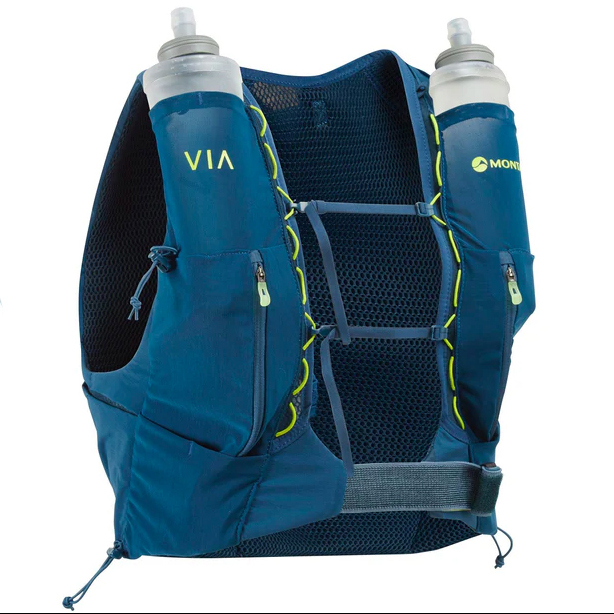
Although styled like a running vest, with a snug fit and no annoying movement when you run, the Montane Gecko 12+ hydration pack offers ample dry storage space for carrying all the gear required for a long day on the trails or an ultra marathon. It’s not cheap, but it’s a good investment if you do lots of long events and value quality. With plenty of pockets and pouches, it comes with soft flasks (but no reservoir) and multiple features (including whistle and pole-holders).
Read our full review of the Montane Gecko VP 12+ hydration pack here.
For
- Flasks included
- Body-hugging without being restrictive
- Zipped main compartment
- Bungee on back for extra carry capacity
- Lots of pockets (all easily accessible)
- Whistle included in one pocket
Against
- Reservoir not included
- No recycled materials used
- Poles have to be carried on the front
Comparison table
Hydration Vest | CamelBak Dart Run Vest | Nathan TrailMix 2.0 | Montane Gecko VP 12+ |
|---|---|---|---|
List price | $75 (US) / £75 (UK) | $150 (US) / £125 (UK) | $190 (US) / £140 (UK) |
Weight (empty) | 393g / 13.8oz | 397g/14oz | 265g / 9.5oz |
Liquid capacity | 1.5L bladder plus 1 x 500ml (20oz) soft flask | 1.5L bladder plus 2 x 500ml (20oz) soft flasks | 1L / 34 fl oz (2 x 500ml / 17 fl oz flasks) |
Dry Storage capacity | 0.5L | 12L | 12L |

Author of Caving, Canyoning, Coasteering…, a recently released book about all kinds of outdoor adventures around Britain, Pat has spent 20 years pursuing stories involving boots, bikes, boats, beers and bruises. En route he’s canoed Canada’s Yukon River, climbed Mont Blanc and Kilimanjaro, skied and mountain biked through the Norwegian Alps, run an ultra across the roof of Mauritius, and set short-lived records for trail-running Australia’s highest peaks and New Zealand’s Great Walks. He’s authored walking guides to Devon and Dorset, and once wrote a whole book about Toilets for Lonely Planet. Follow Pat’s escapades on Strava here and Instagram here.
